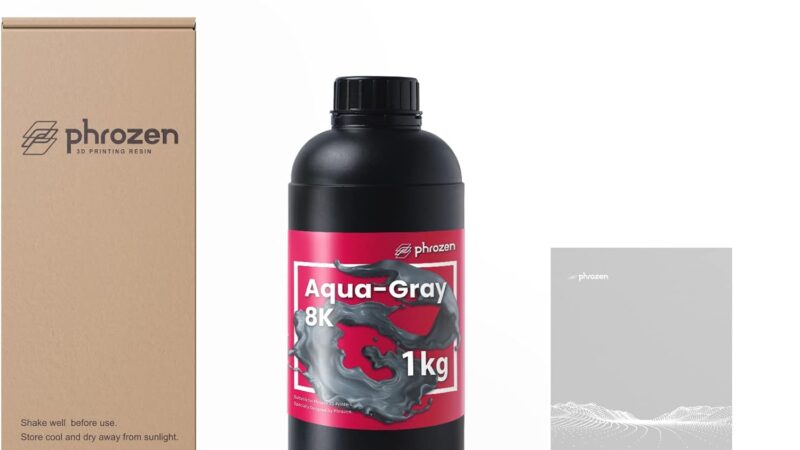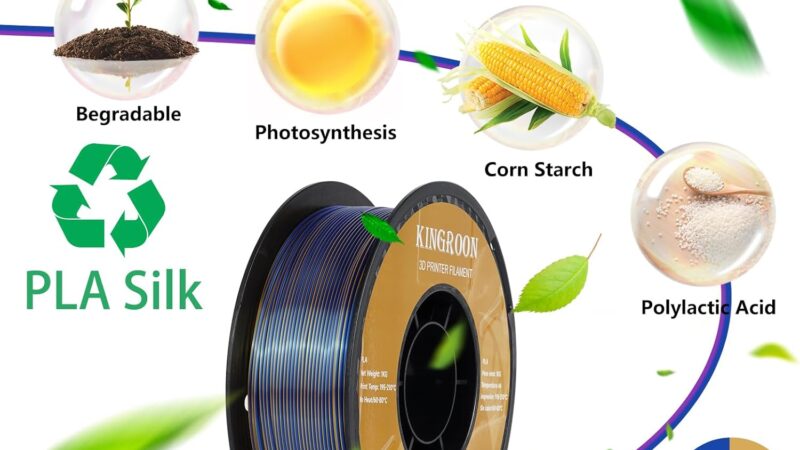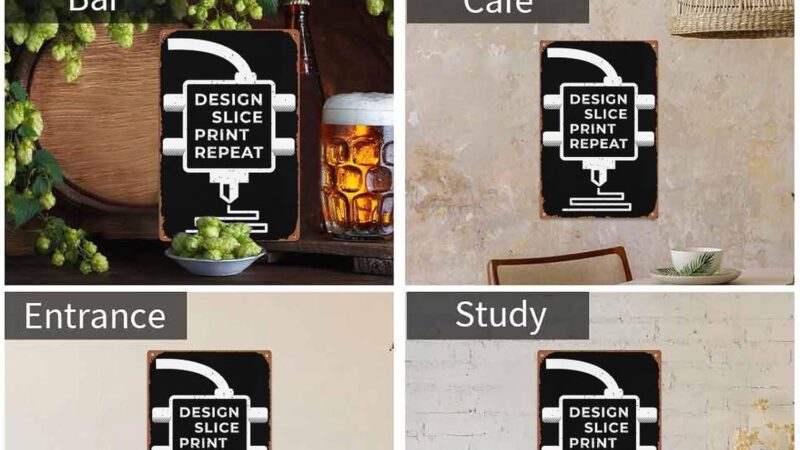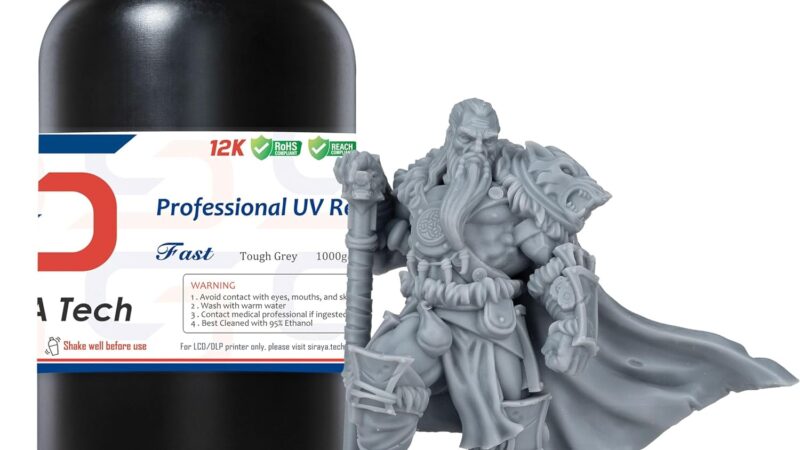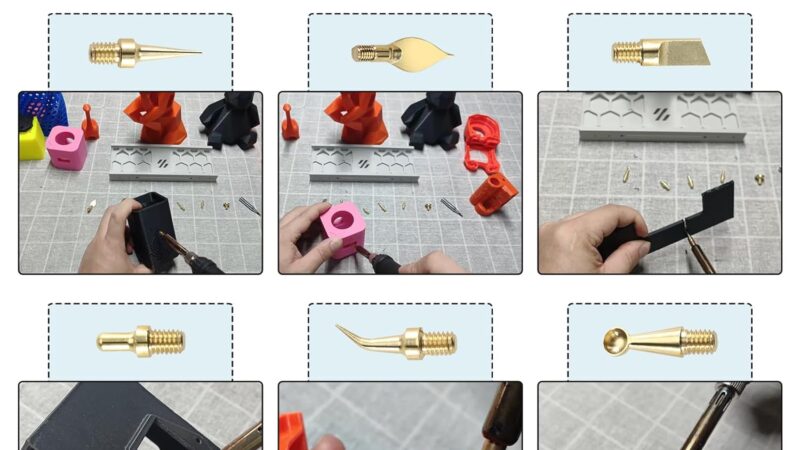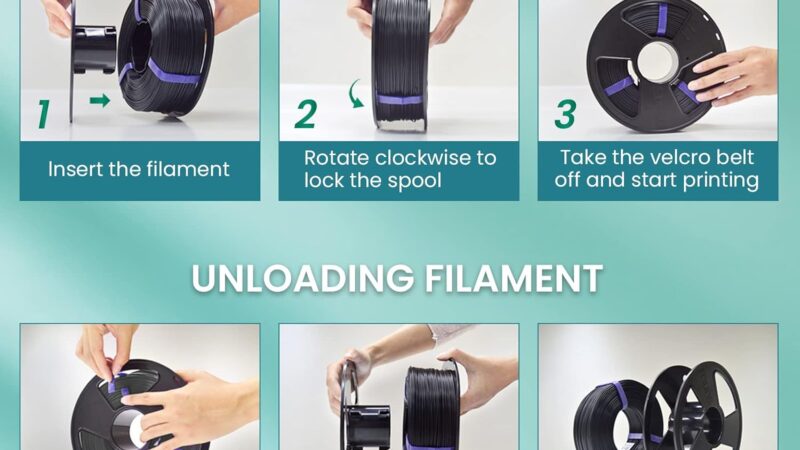Exploring the Basics of FDM 3D Printing

Get ready to embark on an exciting journey as we explore the fascinating world of FDM 3D printing. In this article, we will unravel the mysteries behind this innovative technology and understand the fundamentals of how it works. Whether you’re a curious beginner or a passionate maker, join us as we delve into the basics of FDM 3D printing and unlock the infinite possibilities it holds for creativity and manufacturing.
1. What is FDM 3D Printing
1.1 Overview of FDM 3D Printing
FDM (Fused Deposition Modeling) 3D printing, also known as FFF (Fused Filament Fabrication), is a popular and widely used additive manufacturing technology. It involves building three-dimensional objects layer by layer using a thermoplastic filament. FDM 3D printers are affordable, versatile, and easy to use, making them ideal for both professional and hobbyist applications.
1.2 Working Principle of FDM 3D Printing
The working principle of FDM 3D printing revolves around the deposition of melted thermoplastic material through a small nozzle or print head. The filament is fed into the printer, where it passes through a heated extruder. The extruder then heats the thermoplastic material to its melting point, allowing it to be extruded in a controlled manner onto the build plate. As the material cools and solidifies, the layers stack on top of each other, gradually forming the desired object.
1.3 FDM 3D Printing Process
The FDM 3D printing process consists of several steps. Firstly, a 3D model is created using computer-aided design (CAD) software. The model is then sliced into multiple layers by specialized software, which generates a set of instructions for the printer to follow. These instructions include details about the layer height, infill density, print speed, and temperature settings. The printer then executes these instructions, depositing the molten material layer by layer until the object is fully formed.
2. Advantages of FDM 3D Printing
2.1 Cost-Effective
One of the key advantages of FDM 3D printing is its cost-effectiveness. FDM printers are relatively affordable compared to other 3D printing technologies, making them accessible to a wide range of users. Additionally, FDM 3D printing utilizes thermoplastic filaments, which are inexpensive and readily available. This affordability opens up opportunities for rapid prototyping, small-scale production, and customization without breaking the bank.
2.2 Material Versatility
FDM 3D printers offer a wide range of material options to choose from. Thermoplastic filaments such as PLA, ABS, PETG, and Nylon are commonly used for FDM printing. These filaments come in various colors and often have unique properties, such as flexibility, strength, or heat resistance. Furthermore, FDM printers are not limited to just one type of filament, allowing for versatility in material selection based on the specific requirements of the desired object.
2.3 Ease of Use
FDM 3D printers are known for their user-friendly nature. They typically come with intuitive software that simplifies the printing process, making it accessible to beginners. The filament loading and unloading process is straightforward, and most FDM printers have built-in leveling systems to ensure a properly aligned build plate. With minimal setup and a user-friendly interface, FDM 3D printers are ideal for those new to 3D printing.
2.4 Faster Prototyping
Another advantage of FDM 3D printing is the ability to rapidly create prototypes. Since FDM printers can build objects layer by layer, the printing process itself is relatively quick compared to traditional manufacturing methods. This allows designers and engineers to iterate and refine their designs at a faster pace, reducing the time and cost involved in traditional prototyping methods. With FDM 3D printing, ideas can be translated into physical objects within hours or days, speeding up the product development cycle.

This image is property of images.unsplash.com.
3. Limitations of FDM 3D Printing
3.1 Poor Surface Quality
One limitation of FDM 3D printing is the potential for poor surface quality on printed objects. Due to the layer-by-layer nature of the printing process, visible layer lines may be present on the final print, especially on vertical or curved surfaces. However, there are techniques and post-processing methods available to improve surface quality, such as sanding, priming, and painting.
3.2 Limited Resolution and Accuracy
Compared to other 3D printing technologies, FDM printing offers relatively limited resolution and accuracy. The layer height, which determines the thickness of each layer, affects the level of detail that can be achieved. Smaller layer heights result in finer details but also increase print time. It’s important to note that while FDM printers may not be suitable for highly detailed or intricate designs, they still offer sufficient resolution for many functional and aesthetic applications.
3.3 Size Limitations
FDM 3D printers have certain size limitations in terms of the objects they can produce. The build volume, or the maximum size of the object that can be printed, varies depending on the specific printer model. Large-scale prints may require specialized printers or may need to be divided into smaller parts that can be assembled later. It’s essential to consider these size limitations when choosing an FDM printer for a specific project.
3.4 Use of Support Structures
To achieve successful prints with FDM technology, support structures may be necessary. Support structures are temporary structures that provide stability during the printing process, particularly for overhangs and complex geometries. They are typically made from the same material as the main object but are designed to be easily removable once the print is complete. However, the need for support structures can impact the surface finish of the print and may require additional post-processing to achieve the desired quality.
4. Materials Used in FDM 3D Printing
4.1 Thermoplastics
Thermoplastics are the primary materials used in FDM 3D printing. These materials have the ability to soften and melt when heated, allowing them to be extruded through the printer’s nozzle. Some commonly used thermoplastics for FDM printing include:
- PLA (Polylactic Acid): A biodegradable and environmentally friendly material that is easy to print with and offers a wide range of colors.
- ABS (Acrylonitrile Butadiene Styrene): A durable and impact-resistant material commonly used for functional prototypes and end-use parts.
- PETG (Polyethylene Terephthalate Glycol): A strong and flexible material with excellent layer adhesion, making it suitable for mechanical parts.
- Nylon: A versatile material known for its high strength, flexibility, and resistance to abrasion. It is often used for functional parts and engineering prototypes.
4.2 Composite Materials
In addition to thermoplastics, FDM 3D printing also allows for the use of composite materials. These materials combine thermoplastic matrices with various additives to enhance the properties of the printed objects. Some examples of composite materials used in FDM printing include carbon fiber composites, wood-filled filaments, and metal-filled filaments. These composites offer improved strength, rigidity, conductivity, or aesthetic appeal.
4.3 Specialty Materials
FDM 3D printing has also expanded into the realm of specialty materials, offering unique properties and applications. Specialty materials include materials like flexible filaments (TPU, TPE), high-temperature filaments (PEEK, ULTEM), chemical-resistant materials (PP, PVDF), and even conductive filaments (graphene-infused materials). These specialty materials enable the production of complex functional parts for specialized industries such as aerospace, automotive, and electronics.

This image is property of images.unsplash.com.
5. FDM 3D Printer Components
5.1 Filament Extruder
The filament extruder is a crucial component of an FDM printer. It is responsible for heating the filament and pushing it through the print head’s nozzle. The extruder consists of a motor, a heating element, and a cooling system to control the temperature of the filament. Some extruders also have features like dual extrusion, allowing for the use of multiple filaments or colors in a single print.
5.2 Build Plate
The build plate, also known as the print bed, is the surface on which the object is printed. It provides a flat and stable foundation for the printed layers to adhere to. Build plates can be made of various materials, including glass, aluminum, or specialized build surfaces like PEI (Polyetherimide) or BuildTak. Some build plates are heated to improve bed adhesion, especially when printing with certain materials like ABS.
5.3 Print Head
The print head, also called the extruder nozzle, is responsible for depositing the molten filament onto the build plate. It controls the flow of material, the layer height, and the extrusion speed. The size of the nozzle determines the layer width, which affects both the print resolution and the printing time. Nozzles come in different sizes, ranging from 0.2mm to 1.2mm, and can be interchangeable on many FDM printers.
5.4 Control System
The control system of an FDM 3D printer includes the hardware and software necessary to operate and control the printing process. It consists of a microcontroller, motors, sensors, and a user interface. The control system interprets the instructions from the slicing software and coordinates the movement of the print head, filament feeding, bed leveling, and temperature control. It plays a crucial role in ensuring accurate and reliable prints.
6. Preparing a 3D Model for FDM 3D Printing
6.1 Design Considerations
When preparing a 3D model for FDM 3D printing, there are several design considerations to keep in mind. Designs should avoid overhangs greater than 45 degrees, as they may require support structures. Wall thickness should be adequate to ensure structural integrity, depending on the desired print size and material. Parts with intricate details or fine features may require smaller layer heights or additional post-processing to achieve satisfactory results.
6.2 File Format Requirements
To 3D print a model on an FDM printer, it must be in the appropriate file format. The most commonly used file format is STL (Standard Tessellation Language), which represents the 3D model as a collection of triangles. Most CAD software can export or save models in STL format, making it compatible with slicing software used in conjunction with FDM printers.
6.3 Slicing the Model
Slicing is the process of converting a 3D model into a set of instructions that the printer can understand. Slicing software, such as Ultimaker Cura or Simplify3D, takes into account the printer’s specifications, material settings, and desired print quality. These programs generate a G-code file that contains the instructions for the print head’s movements, filament extrusion, and other parameters that dictate how the object will be printed.

This image is property of images.unsplash.com.
7. Adjusting Print Settings for FDM 3D Printing
7.1 Layer Height
Layer height refers to the thickness of each printed layer. It is an essential parameter to consider when adjusting print settings for FDM 3D printing. Smaller layer heights result in finer details but increase print time. Conversely, larger layer heights reduce print time but may result in a less refined final product. Balancing print speed with desired resolution is crucial to achieve the desired balance between quality and efficiency.
7.2 Infill Density
Infill density determines the internal structure of the printed object. It refers to the amount of material used to fill the model’s interior, with 100% infill meaning the entire volume is solid. Higher infill percentages result in stronger and more robust prints but increase print time and material usage. For less structurally demanding objects, lower infill percentages can be used to save time and material while maintaining sufficient strength.
7.3 Print Speed
Print speed defines how fast the print head moves during the printing process. Faster print speeds reduce print time but may compromise the print quality, especially on smaller, more intricate features. Slower print speeds generally result in better surface quality and finer details but increase the overall printing time. Fine-tuning the print speed based on the specific requirements of the print job is crucial to achieving the desired results.
7.4 Temperature Settings
Temperature settings play a crucial role in FDM 3D printing. The extruder temperature determines the filament’s melting point, ensuring proper flow and deposition onto the build plate. Different materials have different temperature requirements, so it’s important to adjust the extruder and sometimes the heated bed temperatures accordingly. Many FDM printers have preset temperature profiles for common filaments, simplifying the setup process.
8. Post-Processing Techniques for FDM 3D Prints
8.1 Support Removal
In FDM printing, support structures are often used to provide stability during the printing process. Once the print is complete, these support structures need to be removed. This can be done by carefully breaking them away from the printed object, using tools like pliers, tweezers, or flush-cutters. After removal, any remnants or marks left by the supports can be sanded or smoothed using appropriate post-processing techniques.
8.2 Sanding and Smoothing
To improve the surface quality of FDM 3D prints, sanding and smoothing techniques can be employed. Sanding involves using various grits of sandpaper to remove layer lines and imperfections, gradually achieving a smoother finish. After sanding, the surface can be further refined using techniques like filling, priming, and painting. These methods enhance the final appearance of the object and can also help seal and protect the surface.
8.3 Painting and Finishing
Adding color and finishing touches to FDM 3D prints can greatly enhance their aesthetic appeal. After smoothing the surface, the object can be painted using different techniques such as brush painting, airbrushing, or even hydro dipping. Additionally, various finishing techniques, such as clear coating or applying a protective topcoat, can be employed to further enhance the prints’ appearance and durability.
9. Best Practices for FDM 3D Printing
9.1 Calibrating the Printer
Regular printer calibration is crucial for achieving consistent and accurate prints. This includes calibrating the print bed leveling, ensuring the extruder is properly calibrated for filament flow, and verifying the printer’s overall dimensional accuracy. Following the manufacturer’s guidelines for calibration and performing routine maintenance will help maintain printer performance and print quality.
9.2 Maintaining Proper Bed Adhesion
Proper bed adhesion is essential for successful FDM 3D prints. The build plate should be clean and free from any debris or residue that could hinder adhesion. Using adhesive aids like glue sticks, hairspray, or specialized build surface treatments can improve bed adhesion, especially when printing with materials like ABS. It’s also important to ensure the first layer of the print is properly leveled and adheres firmly to the build plate.
9.3 Avoiding Common Issues
Understanding and addressing common issues can help improve the overall FDM printing experience. Some common issues include warping, stringing, layer shifting, and overextrusion. Factors like print temperature, print speed, retraction settings, and fan cooling can greatly affect print quality. Troubleshooting guides and online forums can provide valuable insights into resolving these issues and optimizing prints based on specific materials and printer configurations.
10. Applications of FDM 3D Printing
10.1 Rapid Prototyping
Rapid prototyping is one of the primary applications of FDM 3D printing. The ability to quickly and cost-effectively produce functional prototypes allows for faster product development cycles. It enables designers and engineers to test, validate, and iterate their designs before moving to full-scale production. By utilizing FDM 3D printing, companies can reduce prototyping costs, streamline design improvements, and accelerate time to market.
10.2 Customized Manufacturing
FDM 3D printing offers personalized customization opportunities in various industries. From consumer products to medical devices, FDM printers can produce customized parts, components, or even fully functional end-use products. This customization extends to personalized jewelry, customized phone cases, and even tailored prosthetics. The ability to produce one-off or low-volume customized items on-demand makes FDM 3D printing a versatile and accessible manufacturing solution.
10.3 Educational Tools
FDM 3D printing has become an invaluable tool in creative education and STEAM (Science, Technology, Engineering, Arts, Mathematics) curricula. It allows students to bring their designs to life, empowering them to explore concepts in an interactive and hands-on manner. FDM printers enable students to visualize abstract concepts, prototype ideas, and gain practical problem-solving skills. The accessibility and affordability of FDM 3D printers make them an ideal tool for educational institutions at all levels.
10.4 Art and Design
FDM 3D printing has opened up new possibilities for artists and designers to create unique and intricate artworks. Artists can now translate their digital designs into tangible sculptures and installations. FDM printers can produce complex geometries, intricate patterns, and multi-component assemblies that were previously challenging or impossible to create using traditional methods. The versatility of FDM printing materials, combined with artistic creativity, has resulted in stunning art and design pieces that challenge traditional notions of form and function.
